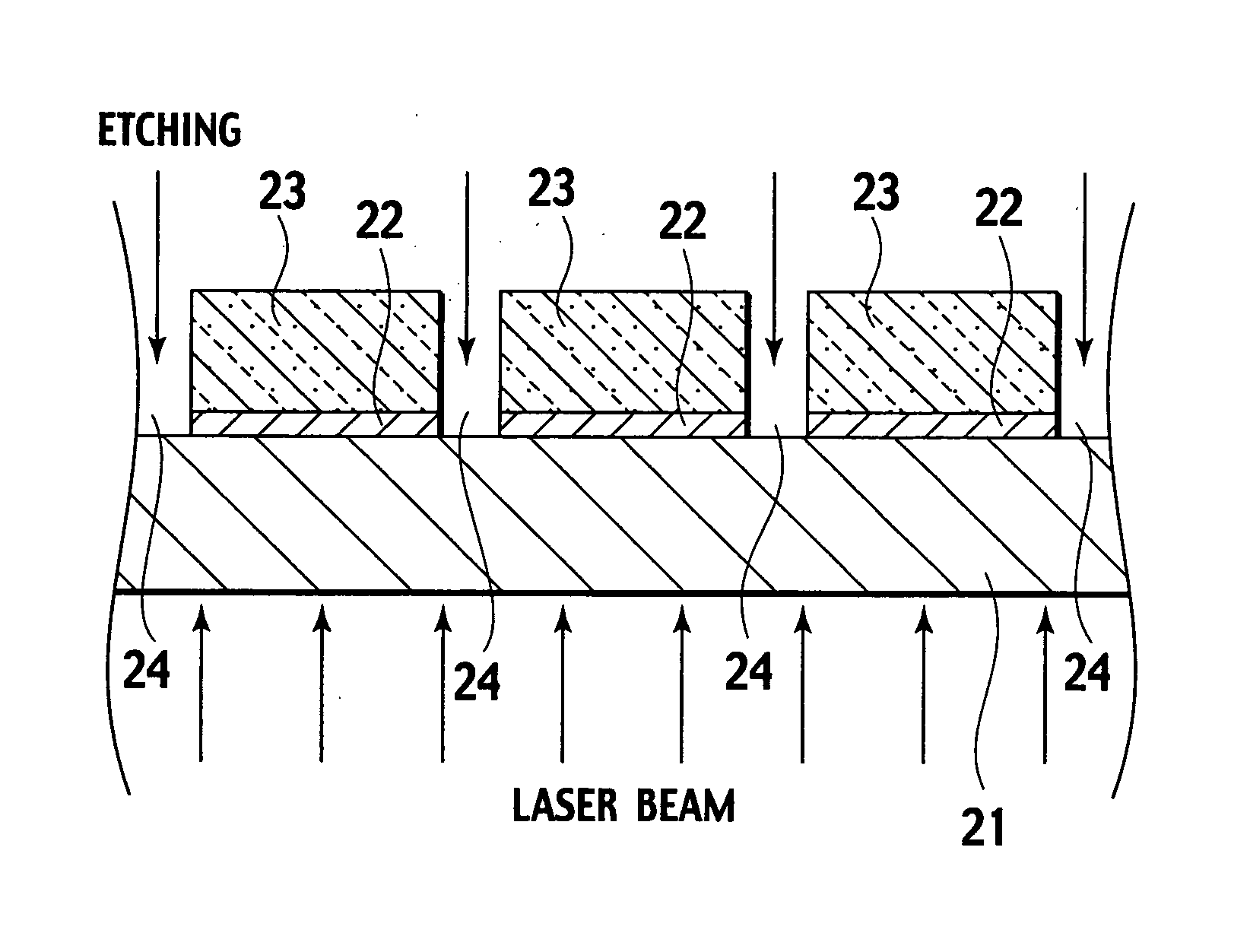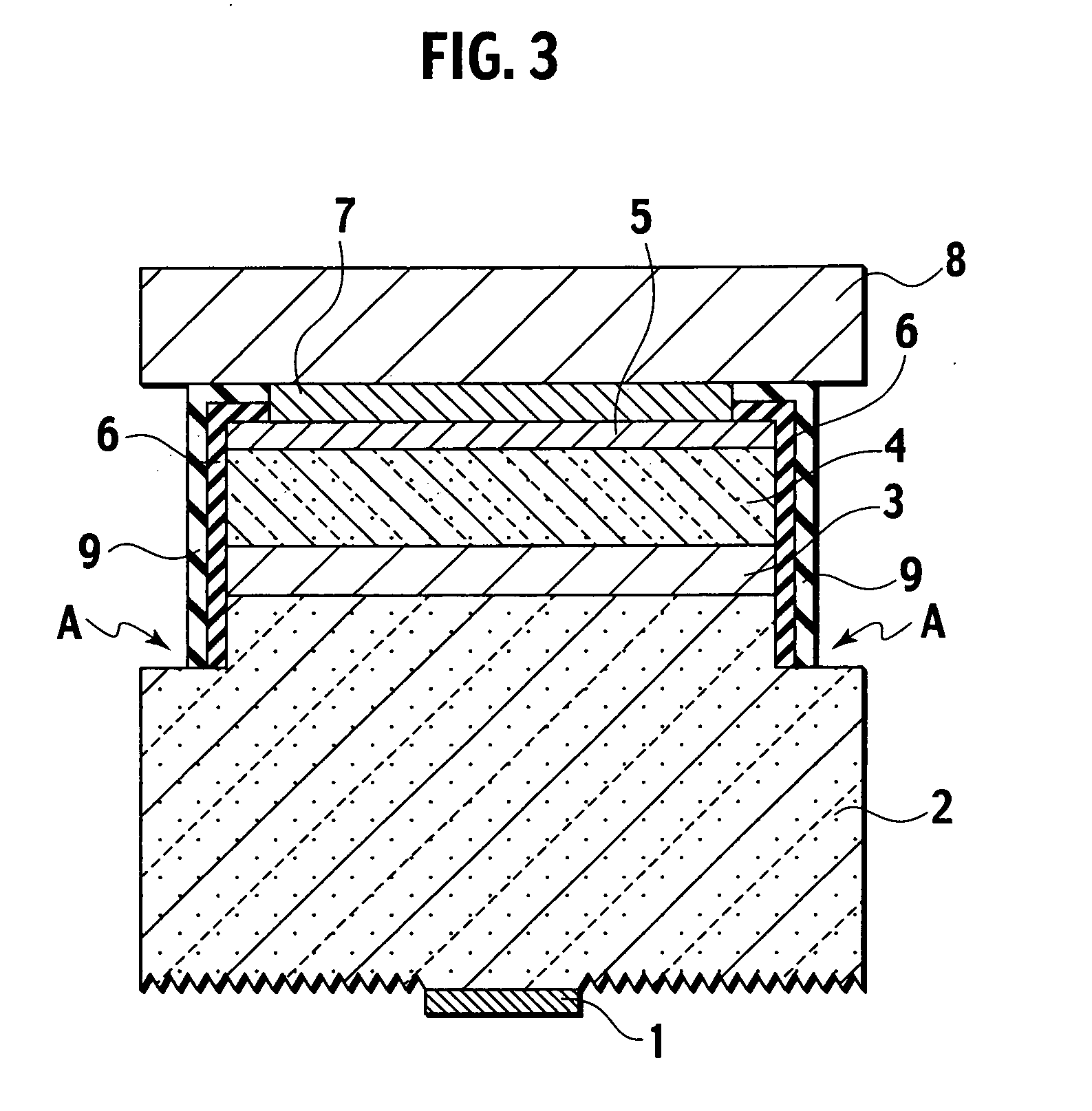Nitride Semiconductor Light Emitting Element and Method for Producing Nitride Semiconductor Light Emitting Element
a light emitting element and semiconductor technology, applied in semiconductor/solid-state device manufacturing, semiconductor devices, electrical equipment, etc., can solve the problems of difficult to uniformly inject current into an active layer, difficult to produce single-crystalline bulk, and difficult to achieve light output efficiency. to increase
- Summary
- Abstract
- Description
- Claims
- Application Information
AI Technical Summary
Benefits of technology
Problems solved by technology
Method used
Image
Examples
Embodiment Construction
[0052]Hereinafter, one embodiment of the present invention will be described with reference to drawings. FIG. 1 shows a cross-sectional structure of a first nitride semiconductor light emitting element according to the present invention.
[0053]Nitride semiconductors also known as III-V group semiconductors include elements such as Al, Ga and In selected from the III group of the periodic table and an element N of the V group. The nitride semiconductor may be a binary alloy crystal such as gallium nitride (GaN), a tertiary alloy crystal such as aluminum gallium nitride (AlGaN) or indium gallium nitride (InGaN), or a quaternary alloy crystal such as aluminum gallium indium nitride (AlGaInN). These materials are deposited onto substrates to produce laminated semiconductor structures usable as light emitting elements used for opto-electronic devices. Nitride semiconductors have a wide band gap necessary for emission of visible light having a short wavelength in green-blue-violet-ultravio...
PUM
 Login to View More
Login to View More Abstract
Description
Claims
Application Information
 Login to View More
Login to View More - R&D
- Intellectual Property
- Life Sciences
- Materials
- Tech Scout
- Unparalleled Data Quality
- Higher Quality Content
- 60% Fewer Hallucinations
Browse by: Latest US Patents, China's latest patents, Technical Efficacy Thesaurus, Application Domain, Technology Topic, Popular Technical Reports.
© 2025 PatSnap. All rights reserved.Legal|Privacy policy|Modern Slavery Act Transparency Statement|Sitemap|About US| Contact US: help@patsnap.com



